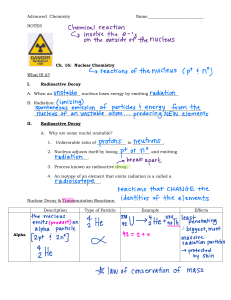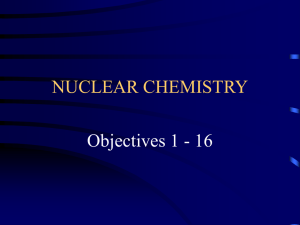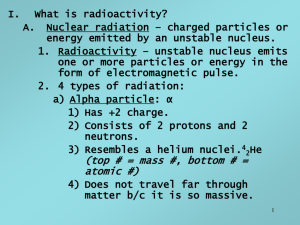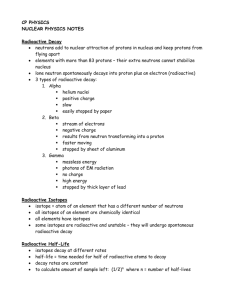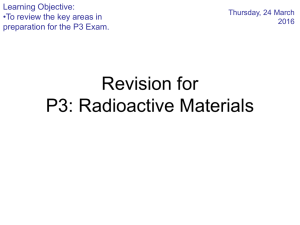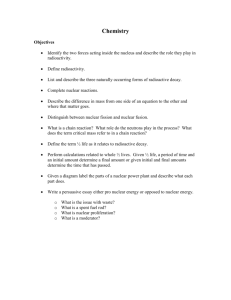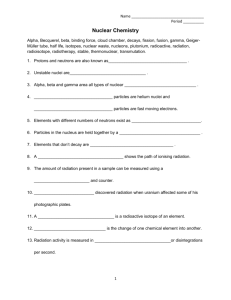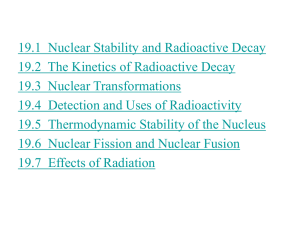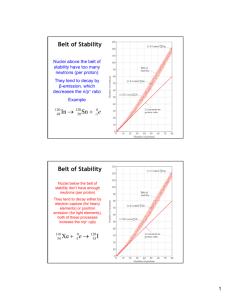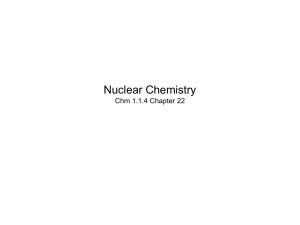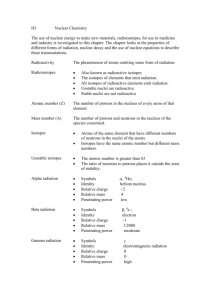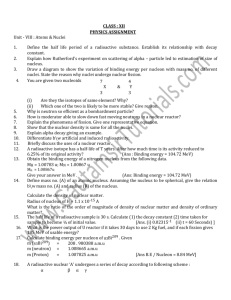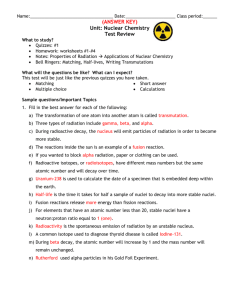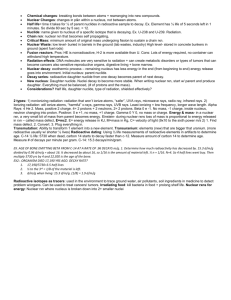Chapter 9 - Nuclear Changes
advertisement
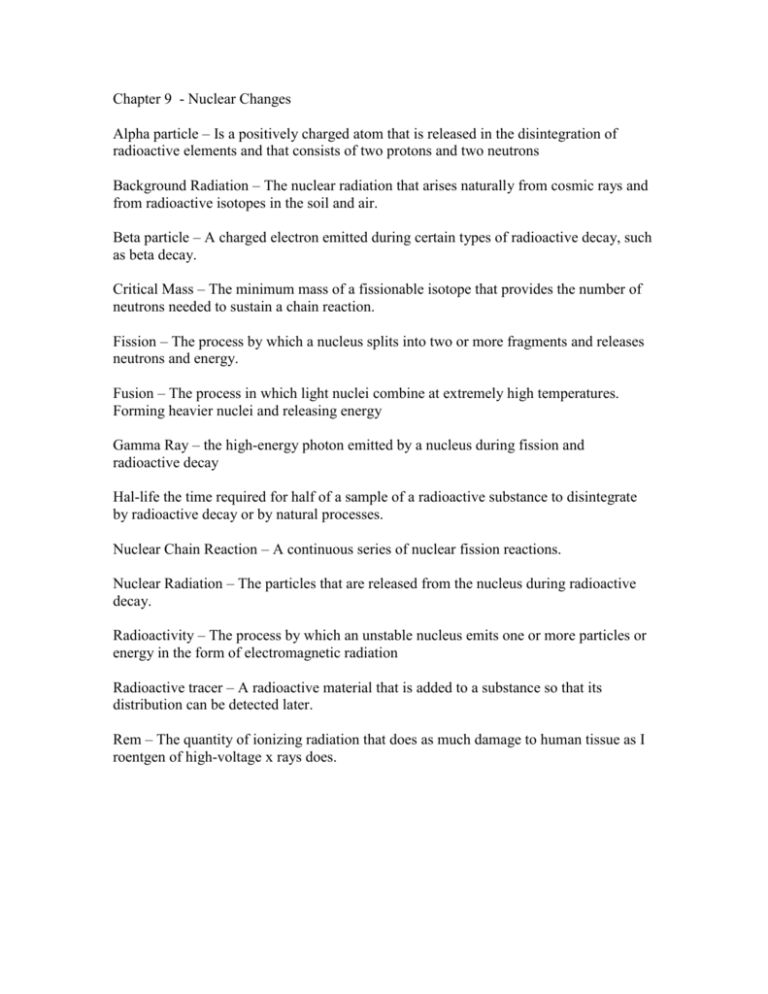
Chapter 9 - Nuclear Changes Alpha particle – Is a positively charged atom that is released in the disintegration of radioactive elements and that consists of two protons and two neutrons Background Radiation – The nuclear radiation that arises naturally from cosmic rays and from radioactive isotopes in the soil and air. Beta particle – A charged electron emitted during certain types of radioactive decay, such as beta decay. Critical Mass – The minimum mass of a fissionable isotope that provides the number of neutrons needed to sustain a chain reaction. Fission – The process by which a nucleus splits into two or more fragments and releases neutrons and energy. Fusion – The process in which light nuclei combine at extremely high temperatures. Forming heavier nuclei and releasing energy Gamma Ray – the high-energy photon emitted by a nucleus during fission and radioactive decay Hal-life the time required for half of a sample of a radioactive substance to disintegrate by radioactive decay or by natural processes. Nuclear Chain Reaction – A continuous series of nuclear fission reactions. Nuclear Radiation – The particles that are released from the nucleus during radioactive decay. Radioactivity – The process by which an unstable nucleus emits one or more particles or energy in the form of electromagnetic radiation Radioactive tracer – A radioactive material that is added to a substance so that its distribution can be detected later. Rem – The quantity of ionizing radiation that does as much damage to human tissue as I roentgen of high-voltage x rays does.
